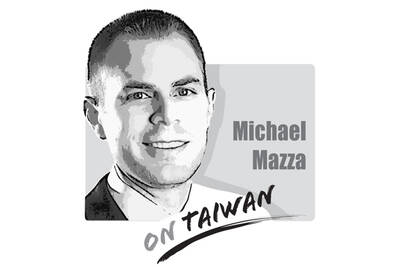The public anxiety fueled by the COVID-19 outbreak has sent shoppers in search of masks across different retail channels as soon as they are restocked.
The main reason for the panic buying is the worry of having no mask to wear when community transmission of the disease breaks out, prompting people to stockpile masks in advance. As long as this mindset continues unrectified, the mask shortage will never be resolved.
People should be using their masks within a given period of time, say within a week or a month after purchase, and making another purchase only when needed. This principle would allow masks to be available for purchase at any time and, by helping others in need, protect public health across the nation.
The shortage in the market is not because all the masks produced thus far have been used: It is due to people stockpiling them.
Even after the government implemented a real-name purchasing system on Thursday last week, many buyers are still buying masks to have as spares.
If this situation is allowed to continue, masks would always run out of stock no matter how many more supplies are manufactured.
To solve the issue and end the stockpiling, the government should require mask manufacturers to print numerals on the inner sleeve of the mask. For instance, masks produced in February should be printed with the number “2,” and those produced in March should bear the number “3.”
One month later, the government should penalize people wearing unnumbered masks, suggesting that they have stockpiled masks manufactured more than a month ago.
If the government issues such a directive, people who have been stockpiling masks would give away or use up their spare masks in no time rather than going through the trouble of tearing up masks and printing falsified numbers.
Following this method, the mask shortage would probably be resolved within a week.
The government needs to come up with more creative measures to administer in troubled times and to guide the public in a bid to safeguard health at this crucial moment.
Phillipe Hsu is a public health center physician.
Translated by Chang Ho-ming
The saga of Sarah Dzafce, the disgraced former Miss Finland, is far more significant than a mere beauty pageant controversy. It serves as a potent and painful contemporary lesson in global cultural ethics and the absolute necessity of racial respect. Her public career was instantly pulverized not by a lapse in judgement, but by a deliberate act of racial hostility, the flames of which swiftly encircled the globe. The offensive action was simple, yet profoundly provocative: a 15-second video in which Dzafce performed the infamous “slanted eyes” gesture — a crude, historically loaded caricature of East Asian features used in Western

Is a new foreign partner for Taiwan emerging in the Middle East? Last week, Taiwanese media reported that Deputy Minister of Foreign Affairs Francois Wu (吳志中) secretly visited Israel, a country with whom Taiwan has long shared unofficial relations but which has approached those relations cautiously. In the wake of China’s implicit but clear support for Hamas and Iran in the wake of the October 2023 assault on Israel, Jerusalem’s calculus may be changing. Both small countries facing literal existential threats, Israel and Taiwan have much to gain from closer ties. In his recent op-ed for the Washington Post, President William
A stabbing attack inside and near two busy Taipei MRT stations on Friday evening shocked the nation and made headlines in many foreign and local news media, as such indiscriminate attacks are rare in Taiwan. Four people died, including the 27-year-old suspect, and 11 people sustained injuries. At Taipei Main Station, the suspect threw smoke grenades near two exits and fatally stabbed one person who tried to stop him. He later made his way to Eslite Spectrum Nanxi department store near Zhongshan MRT Station, where he threw more smoke grenades and fatally stabbed a person on a scooter by the roadside.
Taiwan-India relations appear to have been put on the back burner this year, including on Taiwan’s side. Geopolitical pressures have compelled both countries to recalibrate their priorities, even as their core security challenges remain unchanged. However, what is striking is the visible decline in the attention India once received from Taiwan. The absence of the annual Diwali celebrations for the Indian community and the lack of a commemoration marking the 30-year anniversary of the representative offices, the India Taipei Association and the Taipei Economic and Cultural Center, speak volumes and raise serious questions about whether Taiwan still has a coherent India